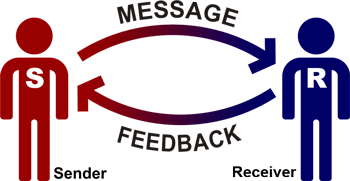Have you been involved with a project and no one knows what’s going on? Is the right hand not talking to the left hand? Is everyone talking about what needs to be done, but nothing is getting done? Is everyone in the same meeting, but no one remembers what the meeting is for? Does this sound all too familiar? Well unfortunately, you are not alone my professional friends, you are not alone. Project communication is clearly needed.

As project managers or leaders in a department, we very often see non-effective communication on projects. But as the saying goes, “you don’t know what you don’t know”, so we’ve provided some examples below on what non-effective communication may look like:
1. Sending a task action email and getting no responses from the project team
2. Conducting work that’s project related but no one knows what’s been completed, resolved or why
3. Answering only part of an email and leaving off key stakeholders
4. Not knowing what the meeting is about until you get into the meeting (how many of you can relate to this one? [Evil grin])
5. Not knowing what’s been implemented or what issues are happening (this usually ends up with end user complaints going up the chain to an executive or chief!)
6. Not knowing what features or new business need a product or service solves
7. Higher-ups/executives not understanding why something is delayed or not implemented
8. Not communicating down what expectations have been set at the executive levels
This list can get very long, and we’ve only added a few above. However, please feel free to add to it in the post comments – we’d love to hear the challenges you are facing with non-effective communication with your projects.
Therefore, thinking further, when it comes to non-effective communication, how can you make project communication effective?
Here’s are five ways we make project communication effective:
1. Creating a central location to store all project assets and documentation (we like to use Project Online here at Kraft Kennedy with our clients, but it could be an intranet page or document management workspace.)
2. Creating a project organization chart with everyone’s roles and decision making authority clearly defined and outlined (we may include this in a project charter document but it does not necessarily need to be that formal.)
3. Creating a project schedule with budget, timeline and resources that is shared in a central location and updated daily or weekly with the project team members – all of them (we like to use Microsoft Project Professional, but other project management programs can be just as effective or if you have no budget, Microsoft Excel works pretty well too.)
4. Utilizing meeting agendas and meeting notes that documents action items and next steps along with PRIORITY. While those on your team may know what they need to do, they may not know what is the next priority, so monitoring this component is key to keeping to a strict timeline or deadline. (Oh, and having regular scheduled meetings with deliverables and the right project stakeholders!)
5. Posting status meeting notes, actions and project updates in a timely manner to the centralized project site (delaying a status update can have negative effect on the momentum as well as stakeholder interest.)
The list above is a great start to herding the cats and keeping them on the same page. Large projects and programs within a firm or organization can be challenging so making sure the main components are established for effective communication at the beginning of a project sets the
expectations up front (and lets the cats know how the project is anticipated to run!)
In the daily practice of running projects, it’s all about
creating a balance for effective communication within the project team. Establishing balance can take time – as if we have all this extra time lying around (we get it, we feel the struggle!) So, in part two of this series, we’ll review how to strike that effective communication balance when herding the cats!
In the meantime, feel free to share your comments and thoughts below on effective communication within the context of your firm or organizational culture. And by the way if you didn’t already know, we love what we do, so please let us know if we can help with establishing effective communication tactics for your people or projects. We do workshops and webinars on this exact topic!
